Lilibeth Cuenca Rasmussen
I am not what you see
29 Apr - 05 Sep 2021
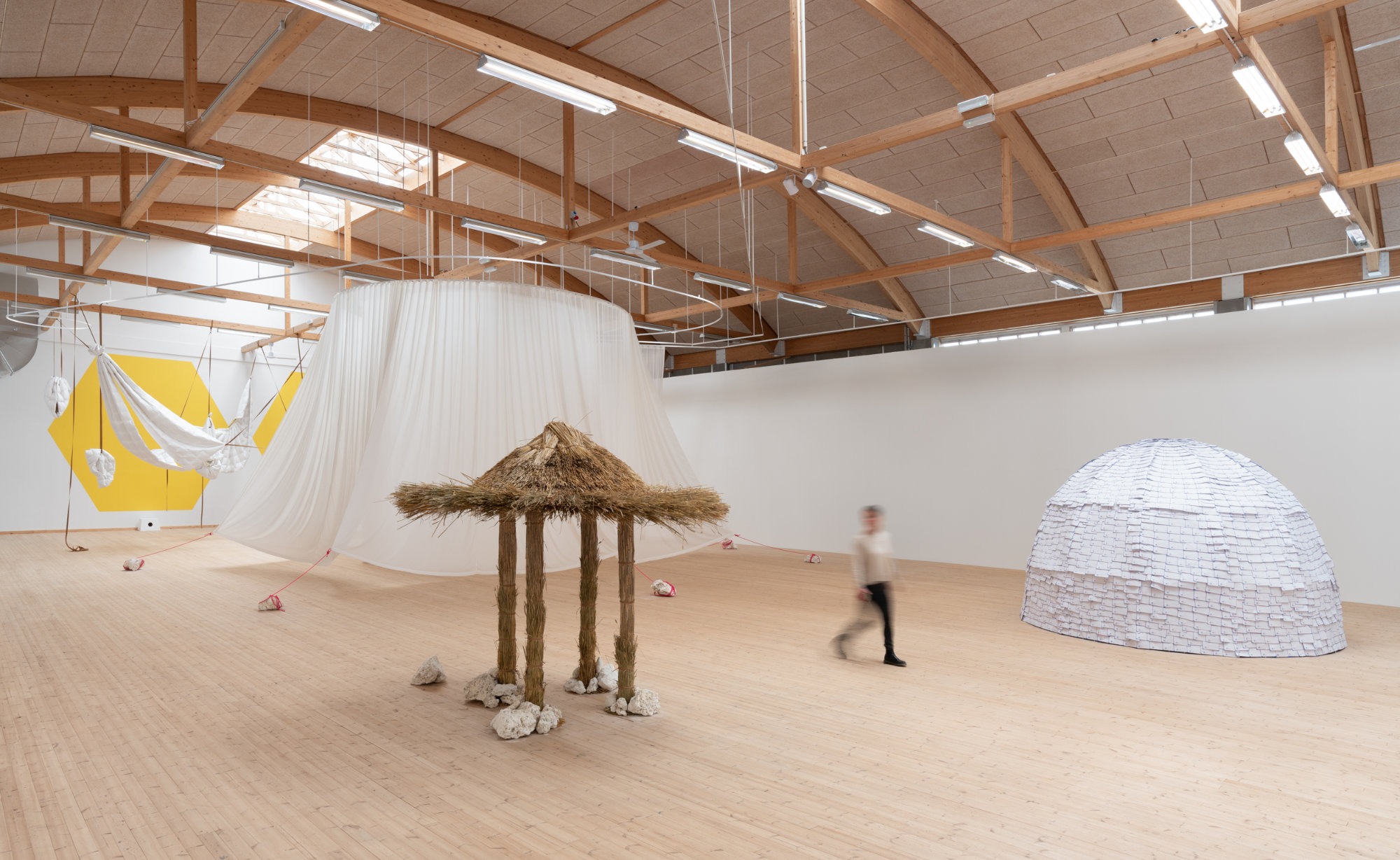
Lilibeth Cuenca Rasmussen, I am not what you see (2021). Installation view at
Copenhagen Contemporary. Photo: David Stjernholm
Copenhagen Contemporary. Photo: David Stjernholm
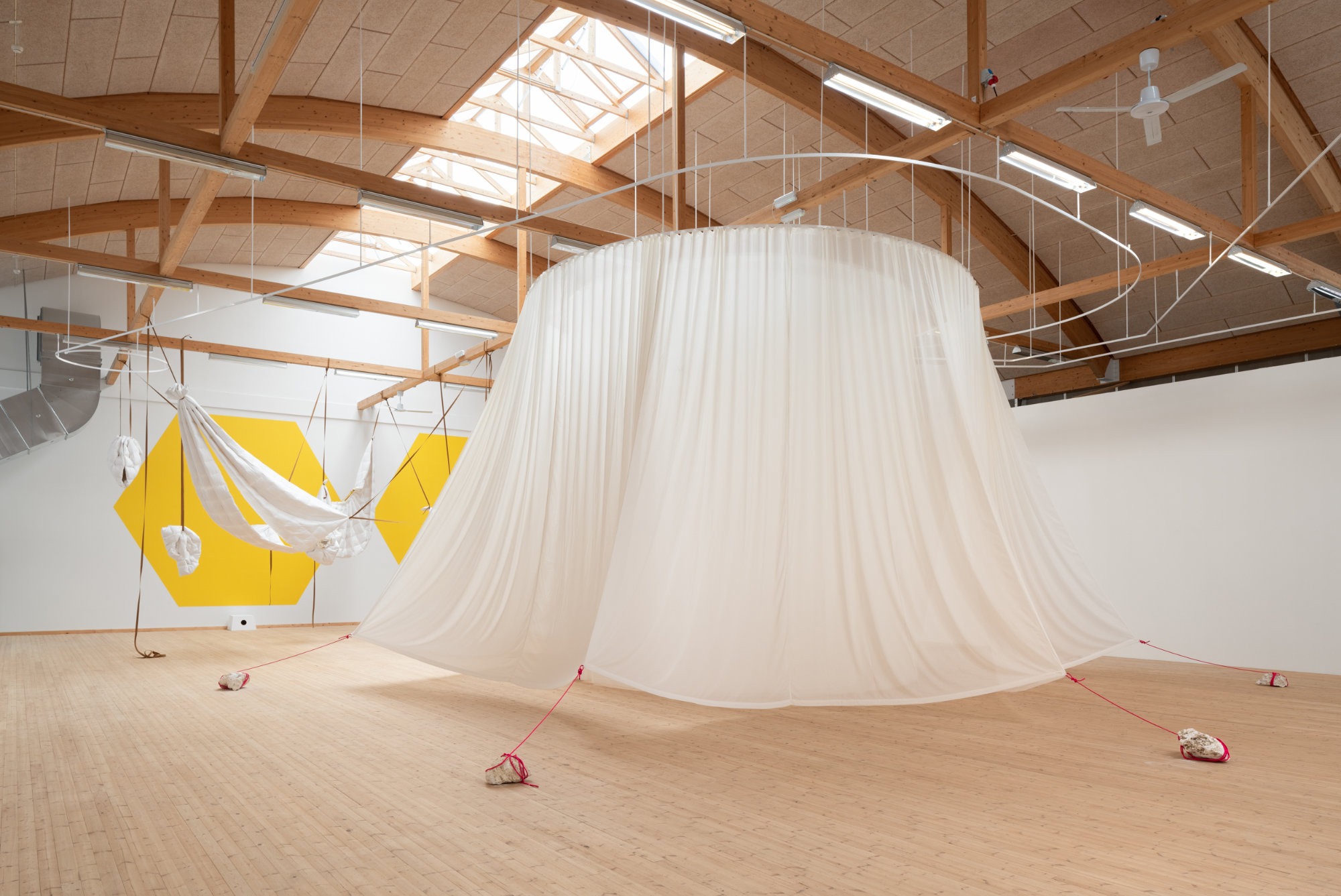
Lilibeth Cuenca Rasmussen, I am not what you see (2021). Installation view at
Copenhagen Contemporary. Photo: David Stjernholm
Copenhagen Contemporary. Photo: David Stjernholm

Lilibeth Cuenca Rasmussen, I am not what you see (2021). Installation view at
Copenhagen Contemporary. Photo: David Stjernholm
Copenhagen Contemporary. Photo: David Stjernholm
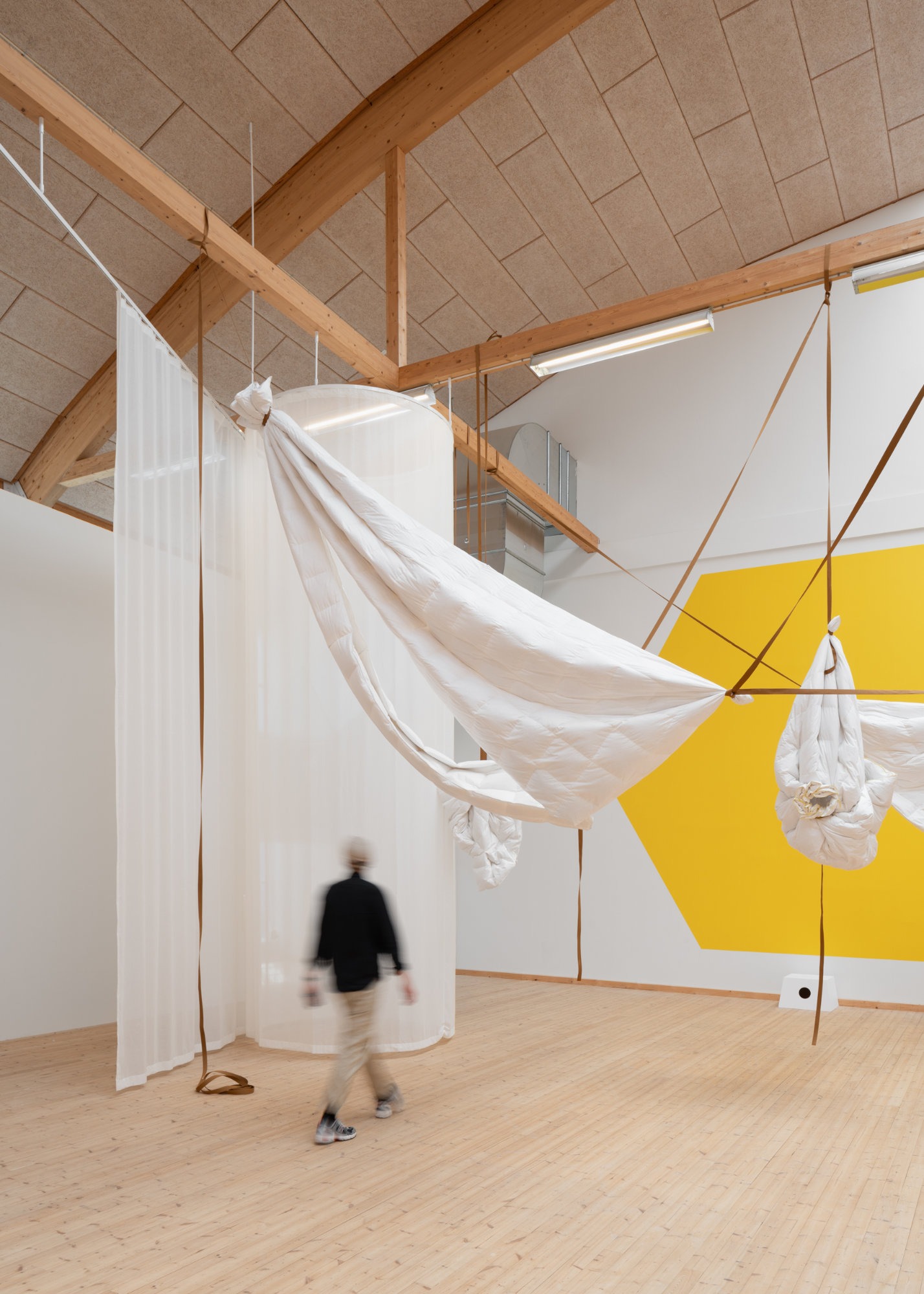
Lilibeth Cuenca Rasmussen, I am not what you see (2021). Installation view at
Copenhagen Contemporary. Photo: David Stjernholm
Copenhagen Contemporary. Photo: David Stjernholm

Lilibeth Cuenca Rasmussen, I am not what you see (2021). Installation view at
Copenhagen Contemporary. Photo: David Stjernholm
Copenhagen Contemporary. Photo: David Stjernholm

Lilibeth Cuenca Rasmussen, Iris (2021). Installation view at Copenhagen Contemporary.
Photo: David Stjernholm
Photo: David Stjernholm

Lilibeth Cuenca Rasmussen, Iris (2021). Installation view at Copenhagen Contemporary.
Photo: David Stjernholm
Photo: David Stjernholm
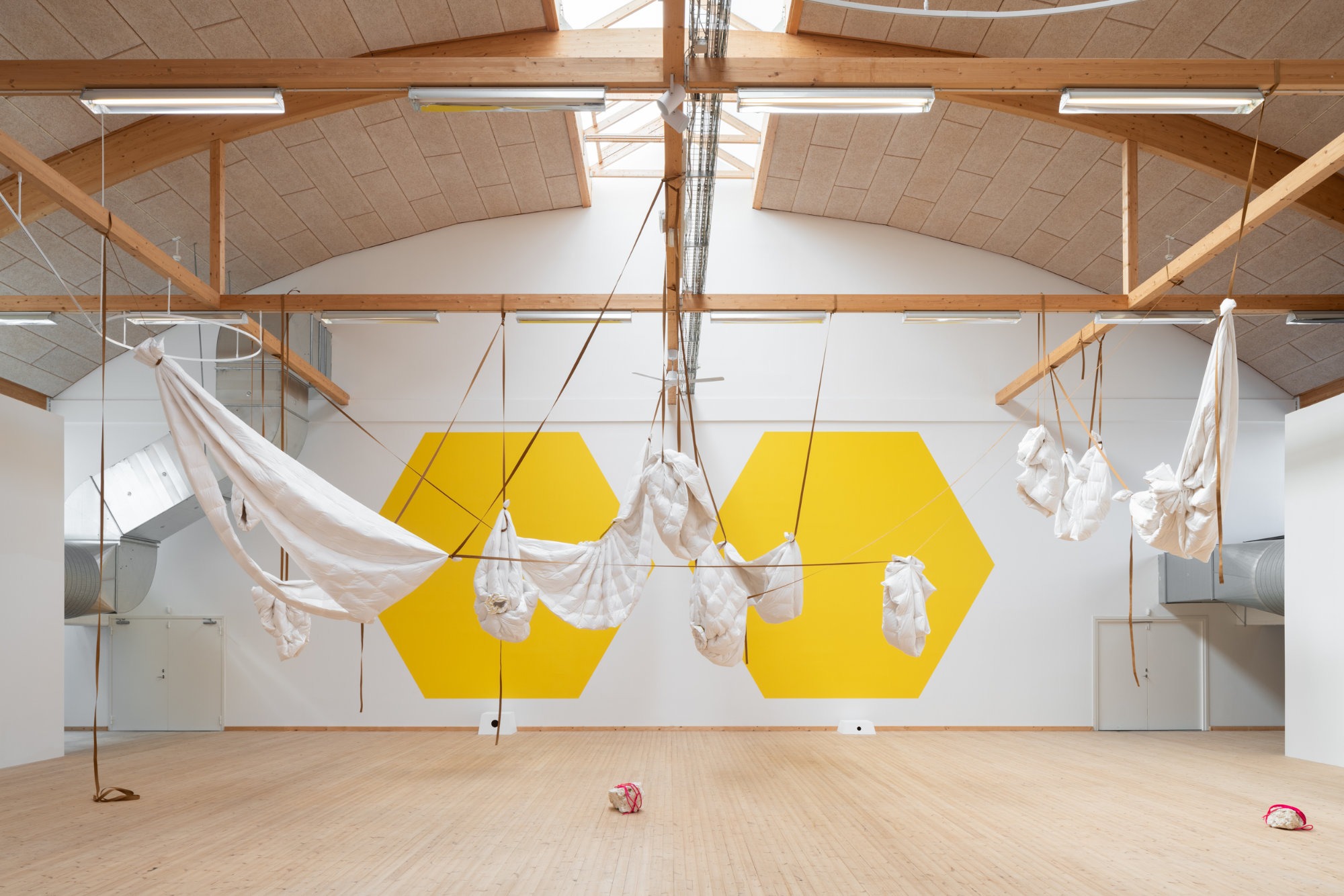
Lilibeth Cuenca Rasmussen, Fatamorgana (2021). Installation view at Copenhagen
Contemporary. Photo: David Stjernholm
Contemporary. Photo: David Stjernholm

Lilibeth Cuenca Rasmussen, Fatamorgana (2021). Installation view at Copenhagen
Contemporary. Photo: David Stjernholm
Contemporary. Photo: David Stjernholm
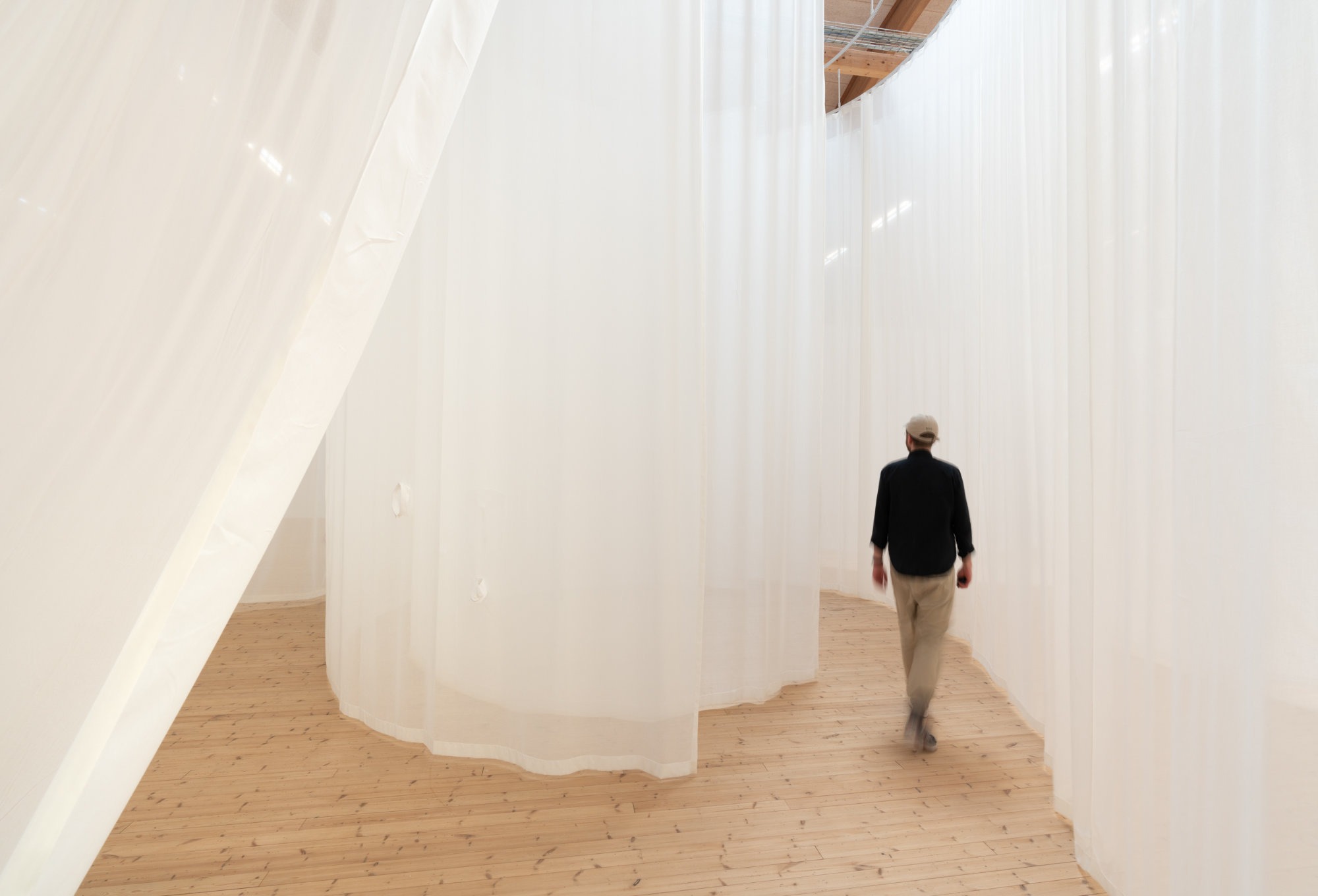
Lilibeth Cuenca Rasmussen, Quadripoint (2021). Installation view at Copenhagen
Contemporary. Photo: David Stjernholm
Contemporary. Photo: David Stjernholm
Lilibeth Cuenca Rasmussen has created the timely exhibition I am not what you see, examining nomadic life, ethnicity, and identity. Here you will meet four monumental sculptures, each bearing a different name and, in their various ways, hybrids of architecture, costumes, and dwellings. Cuenca Rasmussen’s exhibition zooms in on the ability of nomads to carry their home wherever they go, crossing boundaries, parts of the world, cultures, and social conditions.
The artist has been working with these themes since the beginning of her artistic practice and I am not what you see, one of her largest exhibitions to date, manifests this examination using the leverage offered by both installation and performance.
With her exhibition I am not what you see, Lilibeth Cuenca Rasmussen poses questions about the nomadic condition: who is today’s nomad and where do they belong? What kinds of ideas and genetics do we carry with us? Who are you if – like the artist – you have a dual ethnic identity, calling two or more countries, parts of the world, and cultures your home and upholding their traditions? Rather than reducing each other to simple and unambiguous categories like man, woman, Asian or European, artist etc., Lilibeth Cuenca Rasmussen asks you to reflect on everything that lies behind.
The four sculptures in the exhibition: Iris, Miss Fabula, Fatamorgana, and Quadripoint are created from very different materials: straw, airmail envelopes, quilts, and textiles. Common to them all is that they each replicate a type of dwelling, thereby recalling distant destinations with designs referencing different iconic nomadic dwellings.
However, there is more to them than meets the eye – as indicated by the exhibition title. Their hybrid form spanning sculpture, dwelling type, and costume challenges our stereotype ideas about each other and their surroundings.
The nomad is characterised by not owning land, reflected in the lightness of the sculptures and their inherent mobile and transformative capacity. The nomadic freedom and changeability can be explored by entering the sculptures – ‘putting on’ their identities, like a piece of clothing.
The four hybrids
Iris is inspired by an African dwelling called a rondavel; a circular dwelling built of local materials and usually topped by a thatched roof. The sculpture, doubling as a hat, has the appearance of being movable and easy to bring along with you, but it is anchored in the gallery space with poles inspired by traditional South Asian stilt houses. Several national craft traditions are combined in this work, as thatching was formerly a traditional roof type in Denmark.
Miss Fabula also appears airy and light in her white paper-thin skirt construction. A closer look at the material reveals that the sculpture is made of thousands or airmail envelopes sewn to a blue steel frame with very thin white thread. In shape and colour, the sculpture references an igloo, already a very fragile type of dwelling due to the climate crisis. Like the melting ice, the slow and personal communication by means of airmail is also gradually disappearing.
Suspended from the trusses of the roof is Fatamorgana whose title references a special natural phenomenon only experienced by few people. The quilting material is airy and floating, recalling hammocks and a nomadic people in Amazonas sleeping in trees. The quilt clouds embody a function as clothing, as they, besides being hammocks, can double as dresses and jackets used for the exhibition performances.
The largest work in physical terms is Quadripoint, reminiscent of a tipi. The gossamer-thin white fabric of the sculpture, stretched between floor and ceiling, is anchored to the floor by ten heavy coral stones. A fragmented shirt is divided between the tripartite fabric. Besides dissolving its own shape, Quadripoint is able to transform the gallery space completely when the thin fabric is used as a backcloth and border during the performance. The title Quadripoint references both a place in the USA where four borders meet and the Earth’s tectonic plates which, like the work, are mobile.
The artist has been working with these themes since the beginning of her artistic practice and I am not what you see, one of her largest exhibitions to date, manifests this examination using the leverage offered by both installation and performance.
With her exhibition I am not what you see, Lilibeth Cuenca Rasmussen poses questions about the nomadic condition: who is today’s nomad and where do they belong? What kinds of ideas and genetics do we carry with us? Who are you if – like the artist – you have a dual ethnic identity, calling two or more countries, parts of the world, and cultures your home and upholding their traditions? Rather than reducing each other to simple and unambiguous categories like man, woman, Asian or European, artist etc., Lilibeth Cuenca Rasmussen asks you to reflect on everything that lies behind.
The four sculptures in the exhibition: Iris, Miss Fabula, Fatamorgana, and Quadripoint are created from very different materials: straw, airmail envelopes, quilts, and textiles. Common to them all is that they each replicate a type of dwelling, thereby recalling distant destinations with designs referencing different iconic nomadic dwellings.
However, there is more to them than meets the eye – as indicated by the exhibition title. Their hybrid form spanning sculpture, dwelling type, and costume challenges our stereotype ideas about each other and their surroundings.
The nomad is characterised by not owning land, reflected in the lightness of the sculptures and their inherent mobile and transformative capacity. The nomadic freedom and changeability can be explored by entering the sculptures – ‘putting on’ their identities, like a piece of clothing.
The four hybrids
Iris is inspired by an African dwelling called a rondavel; a circular dwelling built of local materials and usually topped by a thatched roof. The sculpture, doubling as a hat, has the appearance of being movable and easy to bring along with you, but it is anchored in the gallery space with poles inspired by traditional South Asian stilt houses. Several national craft traditions are combined in this work, as thatching was formerly a traditional roof type in Denmark.
Miss Fabula also appears airy and light in her white paper-thin skirt construction. A closer look at the material reveals that the sculpture is made of thousands or airmail envelopes sewn to a blue steel frame with very thin white thread. In shape and colour, the sculpture references an igloo, already a very fragile type of dwelling due to the climate crisis. Like the melting ice, the slow and personal communication by means of airmail is also gradually disappearing.
Suspended from the trusses of the roof is Fatamorgana whose title references a special natural phenomenon only experienced by few people. The quilting material is airy and floating, recalling hammocks and a nomadic people in Amazonas sleeping in trees. The quilt clouds embody a function as clothing, as they, besides being hammocks, can double as dresses and jackets used for the exhibition performances.
The largest work in physical terms is Quadripoint, reminiscent of a tipi. The gossamer-thin white fabric of the sculpture, stretched between floor and ceiling, is anchored to the floor by ten heavy coral stones. A fragmented shirt is divided between the tripartite fabric. Besides dissolving its own shape, Quadripoint is able to transform the gallery space completely when the thin fabric is used as a backcloth and border during the performance. The title Quadripoint references both a place in the USA where four borders meet and the Earth’s tectonic plates which, like the work, are mobile.
